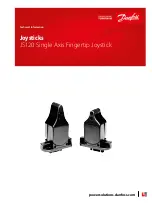
31
TriStar MPPT Operator’s Manual
30
Installation
Disconnects
WARNING: Shock Hazard
Fuses, circuit breakers, and disconnect switches should never open grounded
system conductors. Only GFDI devices are permitted to disconnect grounded
conductors.
AVERTISSEMENT : Risque de décharge électrique
Les fusibles, coupe-circuits et interrupteurs ne doivent jamais ouvrir les conducteurs
du système mis à la terre. Seuls les dispositifs GFDI sont autorisés à déconnecter les
conducteurs reliés mis à la terre.
The NEC requires solar and battery fuses or DC breakers to be installed in the system. These
protection devices are external to the TriStar MPPT 150V controller, and must be a maximum of 45
amps for the TS-MPPT-30, 70 amps for the TS-MPPT 45 and 90 amps for the TS-MPPT-60.
Maximum battery short-circuit current rating must be less than the interrupt current rating of the
battery over-current protection device referenced above.
WARNING:
Breakers and fuses may require lower ratings than referenced above, so as
not to exceed any specific wire ampacity.
AVERTISSEMENT:
Disjoncteurs et fusibles peuvent exiger des cotes inférieures que
mentionnés ci-dessus de manière à ne pas pour dépasser n’importe quel fils
particulier admissible.
Connect the Power Wires
WARNING: Shock Hazard
The solar PV array can produce open-circuit voltages in excess of 150 Vdc when
in sunlight. Verify that the solar input breaker or disconnect has been opened
(disconnected) before installing the system wires.
AVERTISSEMENT : Risque de décharge électrique
Le réseau PV solaire peut produire des tensions de circuit ouvert supérieures à 150
Vdc à la lumière du soleil. Vérifiez que le coupe-circuit ou l’interrupteur d’entrée
solaire a été ouvert (déconnexion) avant d’installer les câbles du système.
Figure 3-7. Power terminal locations
Connect the four (4) power conductors shown in figure 3-7 above in the following steps:
1.
Confirm that the system input and output disconnect switches are both turned off before
connecting the power wires to the controller. There are no disconnect switches inside the
TriStar MPPT 150V.
2. Provide for strain relief if the bottom knockouts are used and conduit is not used.
3. Pull the wires into the wiring box. The Remote Temperature Sensor and Battery Sense wires
can be inside the conduit with the power conductors. It is easier to pull the RTS and Sense
wires before the power cables.
WARNING: Risk of Damage
Be very certain that the battery connection is made with correct polarity. Turn
on the battery breaker/disconnect and measure the voltage on the open battery
wires BEFORE connecting to the TriStar MPPT 150V. Disconnect the battery
breaker/disconnect before wiring to the controller.
AVERTISSEMENT : Risque d’endommagement
Assurez-vous que la connexion a la batterie est effectuée avec la polarité
correcte. Activez le coupe-circuit/interrupteur de la batterie et mesure la tension
sur les câbles ouverts AVANT la connexion au TriStar MPPT 150V. Déconnectez
le coupe-circuit/interrupteur de la batterie avant le câblage sur le contrôleur.
4. Connect the B (positive) wire to the B terminal on the TriStar MPPT 150V. The
B terminal has a red cover.
5. Connect the Battery - (negative) wire to one of the Common Negative terminals on the
TriStar MPPT 150V.
{
Solar +
B
Solar -
Battery -
(Common Negative)
















































